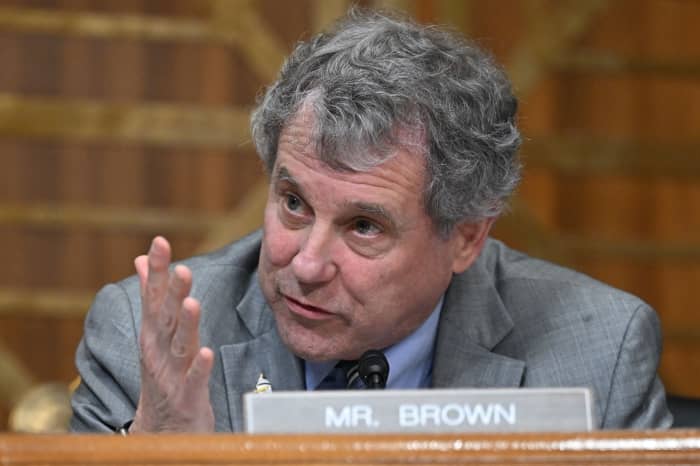Gizmodo
See Stunning Photos of How Climate Change Is Altering Our World
Molly Taft – March 27, 2023

Beautiful and troubling photographs of how the world is changing and heating up are part of a competition to pressure one of the world’s leading camera companies to drop its controversial views on climate.
Business accountability watchdog Action Speaks Louder launched the “Cameras Don’t Lie” competition in February in order to pressure photography giant Canon to distance itself from the climate denial the group says is being perpetuated at a nonprofit Canon supports.
“Canon has two faces; while branding itself as an environmentally-friendly and socially responsible company, it has created a think tank, the Canon Institute for Global Studies (CIGS), which is a platform for climate denial,” the campaign’s website reads.
The Canon Institute for Global Studies was founded by Canon in 2008 “with the aim of contributing to the development of Japan and the rest of the world,” according to a company press release. As the Guardian reported last year, a fellow at the Institute, Taishi Sugiyama, has written multiple blog posts for the Institute that question the science behind climate change and endorse content and theories from prominent denier-led groups and institutions. A report released by a think tank last year also found that Canon has significantly lower climate ambitions than competitors like Nikon, Sony, and Panasonic, and recently lowered its emissions reductions targets.
Earther reached out to the Canon Institute as well as Canon for comment but did not hear back by time of publication. Multiple articles mentioned in the Guardian piece from Sugiyama, including one article calling Thunberg a communist as well as a description of a children’s book he wrote that encourages kids to “investigate the effects of global warming based on facts,” remain live on the site.
“The statements referred to by Action Speaks Louder are those published by Mr. Sugiyama, who is affiliated with CIGS. CIGS operates independently and is unrelated to the business activities of Canon. The research and statements published by Mr. Sugiyama are solely his own,” the company told PetaPixel early last month. “Therefore, Canon is not in a position to officially respond to inquiries from Action Speaks Louder. Global environmental issues are one of Canon’s management core pillars, and Canon remains committed to contributing, through a variety of means, to the realization of a net-zero CO2 emissions society.”
The finalists here were selected from more than 180 entries from 30 countries. The winning image, “Vanishing Island of Dhal Chor Bangladesh” by photographer Paolo Patrizi, shown above, was on display in Times Square in New York City in March, ahead of Canon’s shareholder meeting.
Click through to see the winning photograph and other finalists in the campaign.
Vanishing Island of Dhal Chor, Bangladesh

“Rapid erosion and rising sea levels are increasingly threatening the existence of islands off the coast of Bangladesh. Dhal Chor, Monpura and Bhola are some of many islands on the bay of Bengal affected by increasingly rapid erosion and some of the fastest recorded sea-level rises in the world,” Patrizi said of his photo. “These ‘vanishing islands’ are shrinking dramatically.”
Hatonuevo mining complex, Colombia
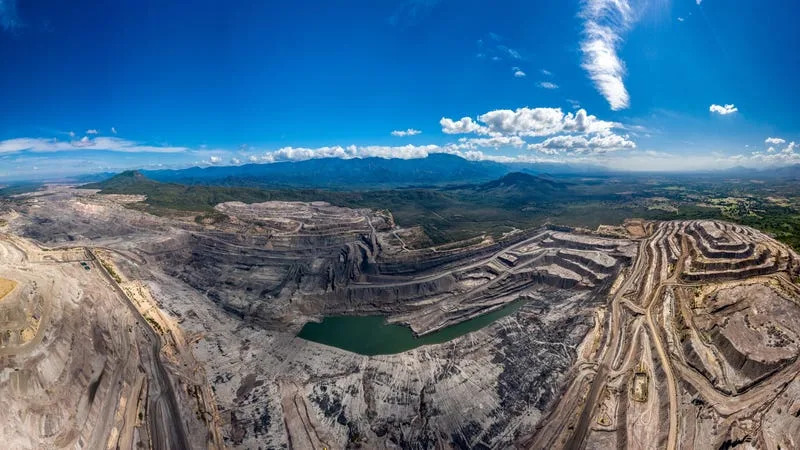
Martínez told the campaign: “The biggest open pit mine in Colombia and one of the biggest in the world, shows the deep impact that the extraction of one of the worst polluter and greenhouse gases causes in nature and environment: The coal.”
Amami Oshima Island, Japan
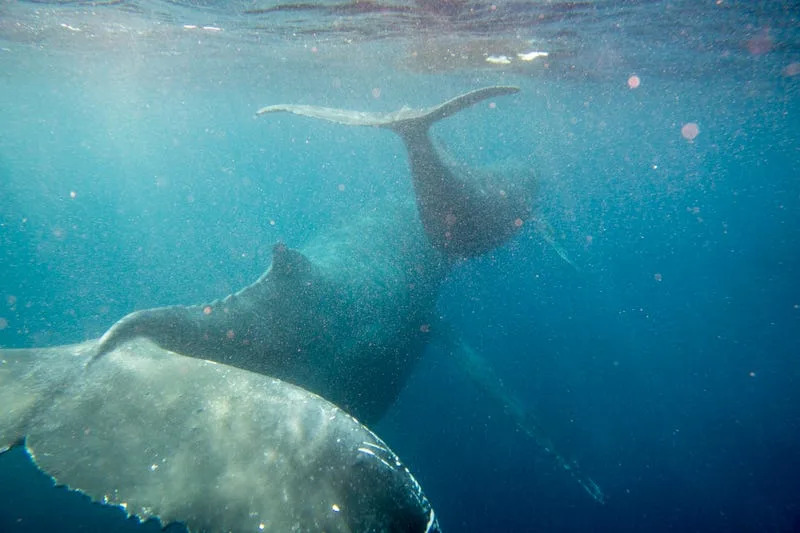
Tsuchiya described his photograph: “The breeding and calving of humpback whales are gradually moving northward due to global warming. Microplastics are also increasing, and the ecosystem of whales is changing.”
Lake Abashiri, Hokkaido, Japan
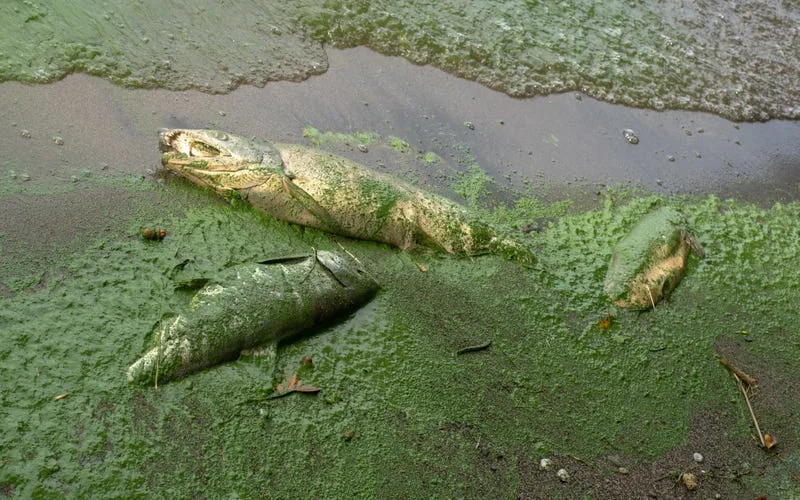
“While traveling alone in Hokkaido, I noticed a strong smell of decay on the shore of Lake Abashiri. The source of the smell was diatoms that had grown so abnormally that they filled the sand of the lakeside and the rotting corpses of salmon,” Endo said.
Presqu’ile Provincial Park, Ontario, Canada
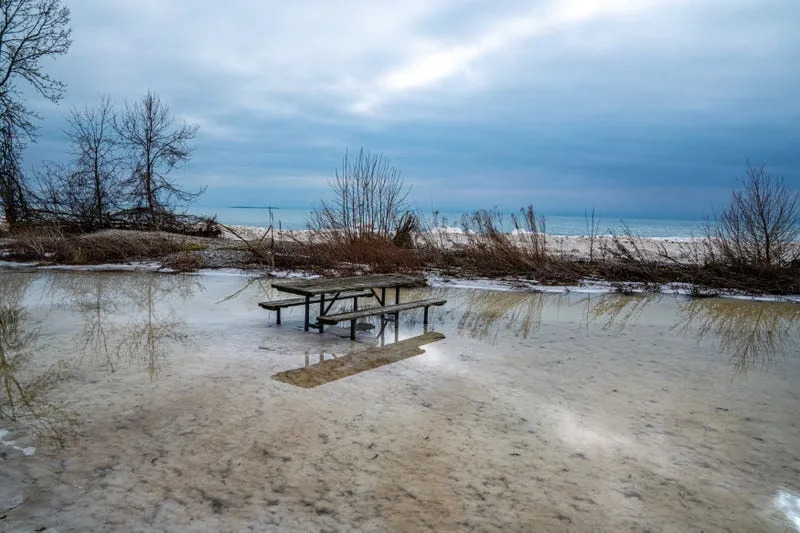
Cheng said of her photo: “On the first day of 2023, the Presqu’ile Provincial Park and its coastal trails were flooded with water. Typically on January 1, the ground and nearby lake would be covered in ice and snow in Ontario. However, record-high temperatures have been broken across the province this year, leaving many trails, river ice rinks and ski hills closed.”
Mt. Zao, on the border of Yamagata and Miyagi Prefectures, Japan

“On a clear night at the end of May, when the snow had melted from the trees, I looked up wistfully at the withered ice and the starry sky, and continued to gaze at these trees, clasping my hands and praying,” Koseki said. “Global warming and climate change are believed to be one of the reasons for the death of these trees. Other possible reasons include the impact of tourism development and attraction of tourism.”
Yosemite National Park, California, USA

“I came to Yosemite to photograph something completely different and when I arrived to the park it was covered in smoke,” Zajac told the campaign. “I considered going back home to avoid camping in smoke, but eventually I stayed around. When at night the smoke cleared for a bit it was surreal to see the fire burning in the valley. The thick smoke didn’t seem to discourage climbers though – if you look carefully you can see lights from their headlamps as they climb up El Capitan.”
Ishigaki Island, Okinawa, Japan

“In the summer of 2022, rising sea temperatures caused the coral reefs around Ishigaki Island to almost completely die after large-scale bleaching,” Abe said. “This is the appearance of the bleached coral with dazzling pastel colours that will be attractive for a little while before it decays.”
San Francisco, California, USA
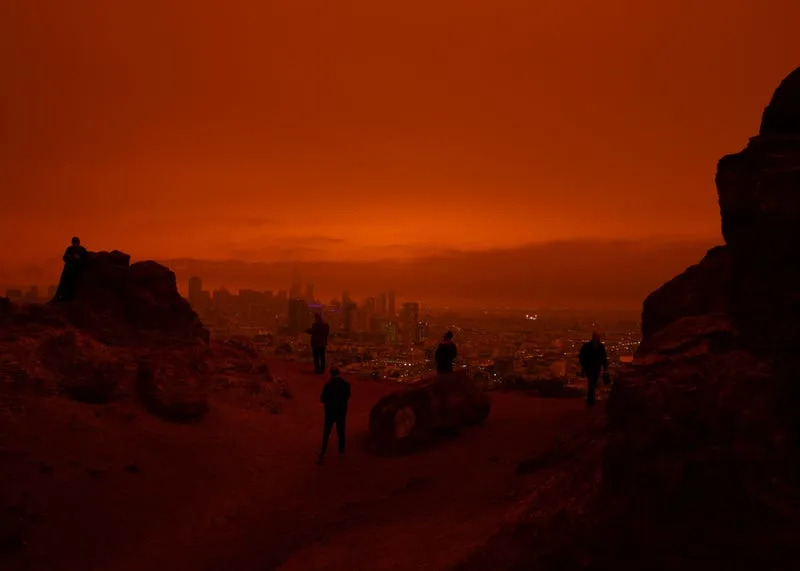
Perkins said of his photo: “The day before I took this photo, there had been severe fires all up and down the coast of California, Oregon and Washington. My sister’s house had burned down, and my father’s house had been threatened. My father told me that they had woke up at 2am to fight the fire from spreading onto their land, and my sister had drove home the next day to find her house burned down in a separate fire. The day after I heard that, the sky in San Francisco where I live turned orange from all the smoke. I went out with my camera to try to document what felt like a biblical event. This shot won Unsplash’s photo of the year in 2020.”
Kolkata, India

“A waterbody in Kolkata, India has dried up due to the intense heat event before the summer season has set in properly,” Acharya said. “The million footprints are proof of the struggle people undertake everyday for some water.”
Nyaung Oo Township, Mandalay Region, Myanmar

“This photo shows the local people in central Myanmar were combating climate change by forest restoration and rehabilitation (i.e., planting trees in a barren land near their village),” Maung said of his photo. “Before planting, rectangular pits (trenches) were dug for capturing and storing sufficient rainwater. Cow dung & bio fertilizers were put inside the pits. The purpose of tree planting is to restore the watershed area and to create a fuel wood supply plantation. For survival and subsistence, planting trees is one of the local strategies to cope with harsh climatic and edaphic conditions.”

